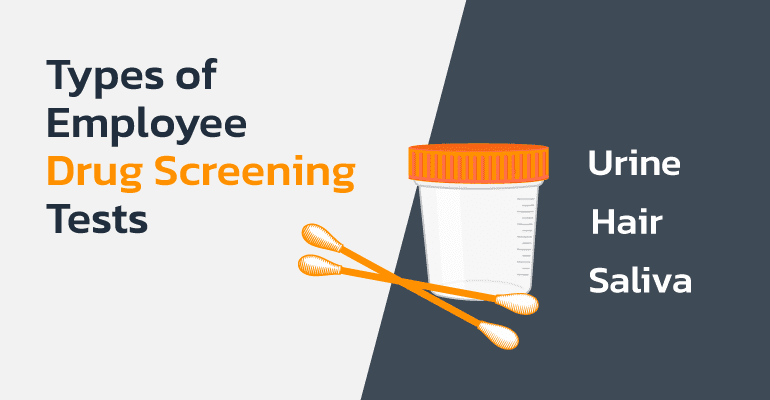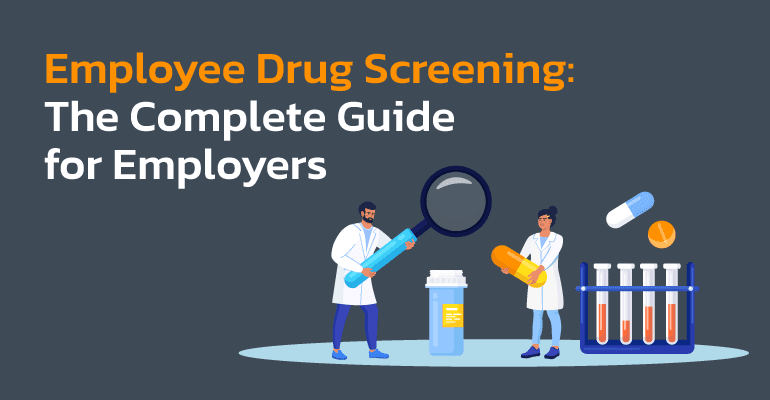A reliable drug-free workplace program protects not only your company but also your employees and customers. In today’s regulatory and safety-conscious environment, an effective employee drug screening program is a cornerstone of workplace safety and compliance.
By integrating drug testing into your hiring and employment policies, organizations can reduce accidents, improve productivity, and maintain regulatory compliance — all while promoting a culture of accountability.
This guide covers everything employers need to know about drug testing: methods, reasons, legal standards, and how to implement a compliant and effective program with WorkforceQA’s Drug and Alcohol Testing Services.
What Is Employee Drug Screening?
Employee drug screening is the process of testing job applicants or current employees for the presence of illegal drugs, alcohol, or misused prescription medications. It’s used to ensure workplace safety, regulatory compliance, and employee well-being.
Drug testing helps employers:
- Prevent workplace accidents and injuries
- Reduce absenteeism and turnover
- Maintain compliance with industry and federal regulations
- Support recovery programs through monitoring and return-to-duty testing
WorkforceQA provides comprehensive, nationwide testing options that include both lab-based and on-site collections, offering flexible solutions for every industry and workforce size.
Types of Employee Drug Screening Tests

Different testing methods serve different purposes depending on detection windows, accuracy, and turnaround time. Choosing the right test type helps employers balance cost, convenience, and compliance.
For detailed options, visit WorkforceQA’s Drug and Alcohol Testing page.
1. Urine Testing
Urine testing is the most common and cost-effective form of employee drug test.
Detection window: 1–7 days (up to 30 for certain substances)
Advantages:
- Detects recent drug use
- Accepted for most federal and private programs
- Easy to collect and analyze
Process:
- Employee provides a urine sample under secure, observed or unobserved conditions.
- The sample is sealed, sent to a certified laboratory, and screened for specific drugs.
- Positive results are confirmed via gas chromatography/mass spectrometry (GC/MS).
Tampering detection: Temperature checks, adulteration panels, and chain-of-custody forms ensure sample integrity.
2. Hair Follicle Testing
Hair testing detects drug use over a longer period — up to 90 days — making it ideal for identifying patterns of habitual use.
Benefits:
- Extremely difficult to adulterate or falsify
- Provides a historical record of use
- Highly reliable results for long-term monitoring
A small sample of hair (usually 1.5 inches) is collected near the scalp and analyzed for drug metabolites embedded in the hair shaft.
3. Saliva (Oral Fluid) Testing
Oral fluid testing is quick, non-invasive, and ideal for detecting recent drug use — typically within the past 24–48 hours.
Advantages:
- Suitable for on-site or mobile testing
- Reduces opportunity for tampering
- Provides real-time detection for post-incident or random screenings
This method is increasingly used for random testing and reasonable suspicion testing due to its convenience and accuracy.
4. Blood Testing
Blood testing is the most invasive but also the most accurate method. It detects current impairment or very recent drug use (within hours).
Use cases:
- Post-accident or reasonable suspicion cases
- Court-ordered or medical-legal scenarios
- Safety-critical roles requiring immediate results
Due to its cost and invasiveness, blood testing is reserved for special circumstances where precise results are absolutely necessary.
5. Breath Alcohol Testing
This test measures blood alcohol concentration (BAC) via a handheld breathalyzer.
Common uses:
- Detecting on-the-job intoxication
- Random or post-incident testing for safety-sensitive workers
- Department of Transportation (DOT) compliance
Breath tests are fast, accurate, and provide real-time results.
Reasons for Employee Drug Screening
Employers conduct drug testing at various stages of employment to maintain a safe, compliant, and productive environment.
Pre-Employment Testing
Many industries, including transportation, healthcare, and construction, require pre-employment drug tests as part of their hiring process.
Testing candidates before onboarding helps employers:
- Identify high-risk individuals
- Comply with industry regulations
- Ensure new hires are fit for duty
Visit WorkforceQA’s Industries page to explore testing standards across sectors.
Random Drug Testing
Random testing is one of the most effective deterrents against workplace drug use. Employees are selected at random intervals without prior notice.
Benefits:
- Deters ongoing substance abuse
- Promotes fairness and consistency
- Reinforces a culture of accountability
Random testing is particularly crucial in safety-sensitive industries, such as aviation, logistics, and transportation.
Reasonable Suspicion Testing
Conducted when there is observable evidence of impairment or unsafe behavior, such as:
- Slurred speech or erratic behavior
- Odor of alcohol or drugs
- Decline in performance or coordination
Proper documentation and supervisor training are critical to ensuring that reasonable suspicion testing is conducted lawfully and consistently.
Post-Accident Testing
After workplace incidents, employers may test employees to determine if drugs or alcohol contributed to the event.
Purpose:
- Protects employer liability
- Supports insurance and workers’ compensation investigations
- Enhances safety accountability
Employers should follow a defined post-incident protocol aligned with OSHA and DOT standards.
Return-to-Duty and Follow-Up Testing
When an employee returns to work after a positive test or rehabilitation, return-to-duty testing ensures ongoing sobriety and compliance.
Follow-up testing may continue for up to 12–24 months, supporting recovery programs and ensuring continued safety.
Legal Rights and Compliance in Employee Drug Screening
Federal and State Regulations
Drug screening must comply with a web of federal, state, and local regulations. Employers should be aware of:
- Americans with Disabilities Act (ADA)
- Fair Credit Reporting Act (FCRA)
- Department of Transportation (DOT) requirements
For DOT-specific testing, see our article on DOT Pre-Employment Drug Test.
ADA and Drug Screening
The ADA prohibits discrimination based on disability or participation in rehabilitation programs. While current illegal drug use is not protected, employers must handle results sensitively and ensure policies are applied equally.
FCRA Compliance in Drug Testing
Under the Fair Credit Reporting Act (FCRA), employers using third-party providers must:
- Obtain written consent before conducting a test
- Provide pre-adverse and adverse action notices for any employment decision based on results
- Allow candidates to dispute inaccurate findings
You can read more in What Is Included in a Background Check to see how background and drug testing intersect.
Department of Transportation (DOT) Regulations
The DOT mandates rigorous drug and alcohol testing for safety-sensitive employees, including drivers, pilots, and mechanics.
DOT testing requirements include:
- Pre-employment and random testing
- Post-accident and reasonable suspicion testing
- Return-to-duty and follow-up testing
Learn more about compliance in our DOT background check guide.
Best Practices for Implementing Employee Drug Screening
Creating a Drug-Free Workplace Policy
Every business should establish a clear, written drug-free workplace policy that includes:
- Purpose and scope of the policy
- Testing procedures and frequency
- Employee rights and privacy protections
- Consequences of positive results
A transparent policy fosters fairness, compliance, and employee trust.
Choosing the Right Drug Screening Method
Factors to consider when selecting a testing method:
- Detection window: Hair for long-term use, saliva for recent use.
- Cost and logistics: Urine is cost-effective; blood and hair are more specialized.
- Compliance: Ensure methods meet industry and regulatory standards.
WorkforceQA’s experts help employers design testing programs tailored to their operational and compliance needs.
Partnering with a Trusted Drug Screening Provider
Working with a certified partner like WorkforceQA ensures:
- Nationwide access to clinics and collection sites
- On-site and after-hours testing
- DHHS, ADA, FCRA and DOT compliance
- Automated reporting and result tracking
When choosing a provider, look for accreditation (e.g., SAMHSA-certified labs), secure data handling, and dedicated client support.
The Benefits of Employee Drug Screening for Employers
Enhanced Workplace Safety
Drug testing prevents impaired workers from endangering themselves or others, reducing accidents, and ensuring compliance with safety laws.
Improved Productivity
A drug-free workplace fosters focus, improved attendance, and enhanced team performance, ultimately driving measurable productivity gains.
Legal and Compliance Protection
Adhering to testing laws and documentation practices safeguards against lawsuits, penalties, and regulatory violations.
Cost Savings
Organizations that conduct regular testing report fewer accidents, lower turnover, and reduced healthcare and insurance costs, delivering significant long-term savings.
WorkforceQA – Your Partner in Employee Drug Screening
Employee drug screening is more than a compliance requirement — it’s a proactive strategy for protecting your workforce, reputation, and bottom line.
At WorkforceQA, we provide:
- Comprehensive drug and alcohol testing solutions
- 24/7 on-site and clinic-based collections
- Secure, compliant results reporting
- Integration with HR and safety systems
From pre-employment testing to random and DOT compliance programs, WorkforceQA supports organizations nationwide with expertise, technology, and service excellence.
Learn about WFQA’s Drug Screening Services and discover how our nationwide network and compliance expertise can help you maintain a safe, drug-free workplace.





